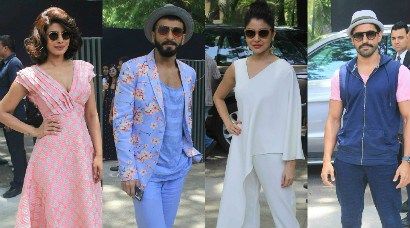The Trend of Multi-Starrers Seems to Be Re-Emerging in a Big Way

The next few months will witness the return of a popular trend from the ’70s to the early ’90s — multistarrers. Up for release are Anurag Kashyap’s Bombay Velvet — featuring Ranbir Kapoor, Anushka Sharma, Karan Johar, Kay Kay Menon and Raveena Tandon, among others — and Zoya Akhtar’s Dil Dhadakne Do, in which Anushka’s co-stars include Ranveer Singh, Priyanka Chopra, Farhan Akhtar, etc. Even Rohit Shetty’s Dilwale features two pairs — Shah Rukh Khan with Kajol, and Varun Dhawan with Kriti Sanon.
“You have to approach actors who feel the film is bigger than them. Once they agree, managing their dates is a separate challenge altogether,” says Zoya, who is used to dealing with “issues that come with casting multiple actors”. She adds, “Having said that, you will come across actors who like the script and join the journey.”
On the cards are also Abhishek Kapoor’s Fitoor, starring Aditya Roy Kapur, Katrina Kaif, Rekha, Lara Dutta and Aditi Rao Hydari; and Sooraj Barjatya’s Prem Ratan Dhan Payo with Salman Khan, Sonam Kapoor, Neil Nitin Mukesh and Swara Bhaskar.Similarly, Anees Bazmee’s Welcome Back will star John Abraham, Shruti Haasan, Nana Patekar, Naseeruddin Shah and Dimple Kapadia, among others.
Bazmee extolls the benefits of multi-starrers, saying, “Even if any one of their favourite actors is in the film, the audience comes to watch it. But I have never done my casting keeping ‘stars’ in mind. The requirement of the script is of utmost importance.” But do multi-starrers fare better at the box office? Zoya says, “I hope so, but that depends on whether your story works. People won’t watch a bad film just because you have big names in it.”
What about ego clashes between stars? “It’s not easy at all to convince multiple big stars to share screen-space,” feels exhibitor-distributor Akshaye Rathi. But Bazmee disagrees, saying, “If you are honest and hard-working in your approach, actors understand where you are coming from.”





